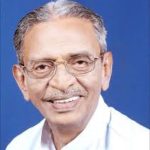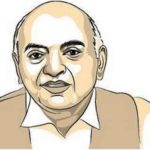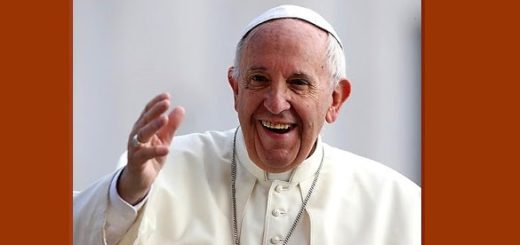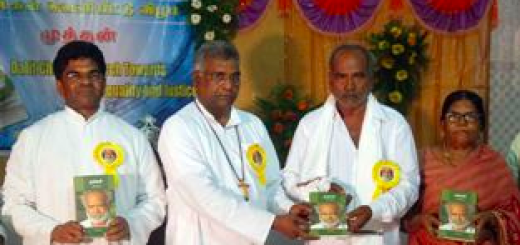Left, Right, Centre give three views Do we need a presidential system?

By Raju Ramachandran, Shashi Tharoor, Upendra Baxi, in the Hindu, MARCH 24, 2017
 (Note: The US has a Presidential system of Government. Now Turkey’s President is campaigning in and outside the country for a vote to have a presidential rule for himself. It is in this context the Hindu has produced below the views of three prominent thinkers and writers in the country on the topic.
(Note: The US has a Presidential system of Government. Now Turkey’s President is campaigning in and outside the country for a vote to have a presidential rule for himself. It is in this context the Hindu has produced below the views of three prominent thinkers and writers in the country on the topic.
Writer Ramachandran writes that concentration of power in one individual is dangerous for democracy. Tharoor instead argues, Presidential system ensures democracy to work best. Upendra Baxi, a legal scholar wants neither, but to reform and cleanse India’s present electoral process.
Dr B.R. Ambedkar drafted the Indian Constitution after studying the merits and demerits of both US and UK models. That has not made it perfect. Indian democracy and electoral system are riddled with defects galore. The First-post-past electoral system has always installed a minority government at the centre. Democracy instead has to be a government of the majority. To make sure of the majority rule, the least we could do to make sure of the majority, that is, to enforce the rule that neither at the national, nor at the state level, no candidate is declared elected until he/she gains the majority of votes in the constituency.
Since the policies and programmes of the central government is not decided by candidates elected to the parliament, it must be made compulsory for each party to announce their platforms in detail before elections, as well as their Prime Ministerial candidate, to help the electorate to choose the candidate who will execute those policies. There are ever so many corrections to be made in our electoral system. So what is possible and feasible is to correct all the glaring defects in our present electoral sytem. james kottor, editor) .
Raju Ramachandran, Senior Advocate, Supreme Court of India
The surrender to the authority of one individual, as in the presidential system, is dangerous for democracy
 This debate is academic. A switchover to the presidential system is not possible under our present constitutional scheme because of the ‘basic structure’ doctrine propounded by the Supreme Court in 1973 which has been accepted by the political class without reservation, except for an abortive attempt during the Emergency by Indira Gandhi’s government to have it overturned. The Constituent Assembly had made an informed choice after considering both the British model and the American model and after Dr. B.R. Ambedkar had drawn up a balance sheet of their merits and demerits. To alter the informed choice made by the Constituent Assembly would violate the ‘basic structure’ of the Constitution. I must clarify that I have been a critic of the ‘basic structure’ doctrine.
This debate is academic. A switchover to the presidential system is not possible under our present constitutional scheme because of the ‘basic structure’ doctrine propounded by the Supreme Court in 1973 which has been accepted by the political class without reservation, except for an abortive attempt during the Emergency by Indira Gandhi’s government to have it overturned. The Constituent Assembly had made an informed choice after considering both the British model and the American model and after Dr. B.R. Ambedkar had drawn up a balance sheet of their merits and demerits. To alter the informed choice made by the Constituent Assembly would violate the ‘basic structure’ of the Constitution. I must clarify that I have been a critic of the ‘basic structure’ doctrine.
Abuse of Power Worries
A presidential system centralises power in one individual unlike the parliamentary system, where the Prime Minister is the first among equals. The surrender to the authority of one individual, as in the presidential system, is dangerous for democracy. The over-centralisation of power in one individual is something we have to guard against. Those who argue in favour of a presidential system often state that the safeguards and checks are in place: that a powerful President can be stalled by a powerful legislature. But if the legislature is dominated by the same party to which the President belongs, a charismatic President or a “strong President” may prevent any move from the legislature. On the other hand, if the legislature is dominated by a party opposed to the President’s party and decides to checkmate him, it could lead to a stalemate in governance because both the President and the legislature would have democratic legitimacy.
A diverse country like India cannot function without consensus-building. This “winner takes it all” approach, which is a necessary consequence of the presidential system, is likely to lead to a situation where the views of an individual can ride roughshod over the interests of different segments.
What about the States?
The other argument, that it is easier to bring talent to governance in a presidential system, is specious. You can get ‘outside’ talent in a parliamentary system too. Right from C.D. Deshmukh to T.A. Pai to Manmohan Singh to M.G.K. Menon to Raja Ramanna, talent has been coming into the parliamentary system with the added safeguard of democratic accountability, because the ‘outsiders’ have to get elected after assuming office. On the other hand, bringing ‘outside’ talent in a presidential system without people being democratically elected would deter people from giving independent advice to the chief executive because they owe their appointment to him/her.
Those who speak in favour of a presidential system have only the Centre in mind. They have not thought of the logical consequence, which is that we will have to move simultaneously to a “gubernatorial” form in the States. A switch at the Centre will also require a change in the States. Are we ready for that?
Changing to a presidential system is the best way
of ensuring a democracy that works
Shashi Tharoor, Congress MP, author, and former UN official
 Our parliamentary system is a perversity only the British could have devised: to vote for a legislature in order to form the executive. It has created a unique breed of legislator, largely unqualified to legislate, who has sought election only in order to wield executive power. There is no genuine separation of powers: the legislature cannot truly hold the executive accountable since the government wields the majority in the House. The parliamentary system does not permit the existence of a legislature distinct from the executive, applying its collective mind freely to the nation’s laws.
Our parliamentary system is a perversity only the British could have devised: to vote for a legislature in order to form the executive. It has created a unique breed of legislator, largely unqualified to legislate, who has sought election only in order to wield executive power. There is no genuine separation of powers: the legislature cannot truly hold the executive accountable since the government wields the majority in the House. The parliamentary system does not permit the existence of a legislature distinct from the executive, applying its collective mind freely to the nation’s laws.
For 25 years till 2014, our system has also produced coalition governments which have been obliged to focus more on politics than on policy or performance. It has forced governments to concentrate less on governing than on staying in office, and obliged them to cater to the lowest common denominator of their coalitions, since withdrawal of support can bring governments down. The parliamentary system has distorted the voting preferences of an electorate that knows which individuals it wants but not necessarily which parties or policies. Voters who want to see, say, Narendra Modi as Prime Minister or Mamata Banerjee as Chief Minister, have to vote for an MP they may not care for, merely because he belongs to Mr. Modi’s or Ms. Banerjee’s party.
Failures in the System
India’s many challenges require political arrangements that permit decisive action, whereas ours increasingly promote drift and indecision. We must have a system of government whose leaders can focus on governance rather than on staying in power.
A system of directly elected chief executives at all levels – panchayat chiefs, town mayors, Chief Ministers (or Governors) and a national President – elected for a fixed term of office, invulnerable to the whims of the legislature, and with clearly defined authority in their respective domains – would permit India to deal more efficiently with its critical economic and social challenges.
Cabinet posts would not be limited to those who are electable rather than those who are able. At the end of a fixed period of time — say the same five years we currently accord to our Lok Sabha — the public would be able to judge the individual on performance in improving the lives of Indians, rather than on political skill at keeping a government in office.
The fear that an elected President could become a Caesar is ill-founded since the President’s power would be balanced by directly elected chief executives in the States. In any case, the Emergency demonstrated that even a parliamentary system can be distorted to permit autocratic rule. Dictatorship is not the result of a particular type of governmental system.
Direct Accountability
Indeed, the President would have to work with Parliament to get his budget through or to pass specific Bills. India’s fragmented polity, with dozens of political parties in the fray, makes a U.S.-style two-party gridlock in Parliament impossible. An Indian presidency, instead of facing a monolithic opposition, would have the opportunity to build issue-based coalitions on different issues, mobilising different temporary alliances of different smaller parties from one policy to the next – the opposite of the dictatorial steamroller some fear a presidential system could produce.
Any politician with aspirations to rule India as President will have to win the support of people beyond his or her home turf; he or she will have to reach out to different groups, interests, and minorities. And since the directly elected President will not have coalition partners to blame for his or her inaction, a presidential term will have to be justified in terms of results, and accountability will be direct and personal.
Democracy, as I have long argued, is vital for India’s survival: we are right to be proud of it. But few Indians are proud of the kind of politics our democracy has inflicted upon us. With the needs and challenges of one-sixth of humanity before our leaders, we must have a democracy that delivers progress to our people. Changing to a presidential system is the best way of ensuring a democracy that works. It is time for a change.
Rather than change the system, why not reform thoroughly and cleanse the electoral processes?
Upendra Baxi, legal scholar and the former vice-chancellor
of Delhi University
 I think the debate has a life cycle of its own. It has been brought up and discussed whenever there has been a super-majority government. From Jawaharlal Nehru to Indira Gandhi to the present, the presidential system has been debated extensively around two aspects: is it desirable, and second, is it feasible?
I think the debate has a life cycle of its own. It has been brought up and discussed whenever there has been a super-majority government. From Jawaharlal Nehru to Indira Gandhi to the present, the presidential system has been debated extensively around two aspects: is it desirable, and second, is it feasible?
To tackle the second aspect first, unless the Supreme Court changes its mind, any such amendment would violate the ‘basic structure’ of the Constitution as was decided with, and since, the Kesavnanda Bharti case. There is no way to get around this unless the Supreme Court now takes a wholly different view.
Different Models
On the desirability aspect, which presidential system are we talking about when we pit the American presidential system against the Westminster model? In the American system, the President appoints his officers; they have limited tenure and their offices are confirmed by the Senate (Upper House). Then, we have the Latin American model, where some Constitutions give Presidents a term often amounting to a life tenure like in Cuba. There are plenty of models to choose from and there are arguments against each. So, which system is being argued for when the votaries of change seek a shift to the presidential system?
Our Rajya Sabha cannot be compared to the U.S. Senate where each state has its own Constitution and has the power to change it. The relationship between the states and the federal government is extraordinary; as is the status of their courts and the manner of appointment of judges. I do not think people have thought about it. Merely stating that a change to the presidential system is needed does not mean much. The Indian debate currently is not focussed on the kind of presidential system envisaged. What is the term we are seeking for the President? Should he/she be re-elected? If so, for how many terms? Then, who decides the change? Parliament? All this requires a massive amendment to the ‘basic structure’ of the Constitution. The Supreme Court has spelt its view on the ‘basic structure’ of the Constitution.
Giving an opinion is one thing. A judgment is a more carefully considered conclusion. Those who support the presidential system should do their homework when they argue against the parliamentary system. There is also the matter of separation of powers. In the U.S., the President, who is also the Supreme Commander, has the power to veto the Congress. Does India need this? The manner of removing the U.S. President through impeachment is a very complex process. There is also the possibility of aggregating more powers to the President.
One could argue that the parliamentary system too runs a similar risk. I do not think it has been thought over. It is not on the table yet.
Reform the Process
On the other hand, there are ideas going around about reforming the electoral processes to make democracy more robust. From limiting expenditure of political parties and deciding the ceiling on the expenditure, to holding simultaneous elections, declaring the results for a combination of booths instead of constituencies — I think it is advisable to debate this and ensure that the gaping loopholes in the electoral processes are speedily plugged.
The present parliamentary system has been tried and tested for nearly 70 years. Rather than change the system, why not reform thoroughly and cleanse the electoral processes?
















